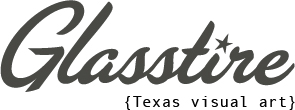Kelli Scott Kelley uses human figures, animals, birds, and hybrid creatures in metaphorical narratives that comment on both the beauty and absurdity in the world. Using found fabrics as her canvas, she incorporates collage and painted images into dreamlike tales that focus on what she calls “the impending demise of the natural world.”
Around 2010, Kelley decided she wanted to avoid adding more objects to a cluttered world and started repurposing antique doilies, embroidered fabrics, crochet-trimmed handkerchiefs, and other vintage linens in her work. These bring an element of fragility to the work and reference older generations of women whose creativity was typically limited to the domestic arts.

Kelli Scott Kelley, “Hope,” 2024, acrylic, repurposed fabric and paper on stretched linen, 42 x 42 inches. Photo: Kelli Scott Kelley
Bare-breasted women, men with erections, and children in the womb all reference sexuality and fertility, while nuclear plants, dead birds, and other dead animals suggest the end of life on the planet. In Hope, a pregnant woman with a bird’s head stands in a desolate landscape littered with lifeless birds. She looks upward, only to see more birds falling from the sky. In the distance, nuclear towers spew yellow gases, their emissions polluting the atmosphere. The woman holds a branch with green leaves, perhaps signifying some hope for the future.

Kelli Scott Kelley, “Matriarch,” 2024, acrylic, repurposed fabric and paper on stretched canvas, 20 x 16 inches. Photo: Paul Hester
Matriarch depicts a monumental female figure with the head of a deer. Magnificent flowering antlers serve as a crown of sorts. She protects an adolescent boy standing in front of her with her robe, which is made from a dark blue fabric printed with green plants. A blue monkey clings to her shoulder. Kelley uses various symbolic animals throughout the show, including bears, rabbits, foxes, chipmunks, owls, and monkeys. In this piece, the monkey may represent the matriarch’s intelligence and the ability to overcome obstacles, and the deer is a reference to her strength and power.

Kelli Scott Kelley, “Patriarch,” 2024, acrylic, repurposed fabric and paper on stretched canvas, 20 x 16 inches. Photo: Paul Hester
Patriarch, on the other hand, presents a dark view of the male species. A naked figure holds a large bird with the head of a deer skull. His penis is erect, and instead of a head, the man has a trumpet-shaped flower that seems to be questing skyward. At his feet, a rodent holds an insect in its mouth. The image of man as hunter has persisted since the hunter-gatherer period, but the cruel killing of defenseless animals is no longer necessary for survival.

Kelli Scott Kelley, “Survivors,” 2024, acrylic, repurposed fabric and paper on stretched linen, 40 x 30 inches. Photo: Kelli Scott Kelley
In Survivors, a man holds a dead fox, accompanied by a live fox with a dead chipmunk in its mouth. The fox symbolizes intelligence, while chipmunks represent vitality and resourcefulness. A seemingly dead rabbit and squirrel lie nearby. The message is clear: the male species is responsible for much of the cruelty and unnecessary death in the world.
Bears also frequent Kelley’s work. In Her Body, a bear appears to protect a pregnant woman. The mother bear is known for her fierce devotion to and protection of her cubs. Some ancient peoples believed that all animals are descended from the bear, which is associated with shamans and said to be able to predict the future. For Native Americans, the bear symbolizes rebirth because of its hibernation and reemergence in the spring.

Kelli Scott Kelley, “Her Body,” 2024, acrylic, repurposed paper and fabric, 13 ½ x 16 inches. Photo: Kelli Scott Kelley
Rabbits join her menagerie, especially in Supernova. Ten rabbits accompany a near-life-size self-portrait reminiscent of Frida Kahlo’s Les Deux Fridas, in which her heart and veins are exposed. The Egyptians believed rabbits possessed magical powers, bringing good fortune and prosperity. Kelley’s rabbits range from cute bunnies to a red-eyed rabbit that gazes malevolently at the viewer. The background is a vintage kimono printed with trees, flowers, and neo-classical arches. At the center is a supernova, a massive star that explodes violently as it collapses. Ironically, this destruction appears in an idyllic scene reminiscent of a romantic rococo painting. “I attempt to imbue truth with magic, creating a sense of the supernatural and otherworldly,” Kelley says. “I am moved by the exquisite beauty in the world, as well as the absurdity and ugliness.”
As part of the creative process, Kelley immerses herself in nature, meditating on the interdependence of all living things. Nature Morte was completed in a year, a month of which was spent at the isolated Blue Mountain Center in upstate New York. It is essential that she connects with nature before returning to the studio to process her experiences and allow the work to evolve. Her creative process involves extensive reading and research, gathering images from books, and staging and photographing models. Kelley relies on her subconscious to guide her as she arranges figures, archetypal images, and anthropomorphic creatures in her paintings.
Kelley’s art operates on many levels—psychological, metaphorical, mythical, and even sociopolitical. She creates parables that convey moral lessons grounded in a matriarchal gaze. According to the artist, “I depict scenarios that can defy interpretation and operate in a realm of the enigmatic, encouraging the viewer to look beyond the obvious and commonplace.”
Nature Morte is on view at Andrew Durham Gallery in Houston through November 30, 2024.


